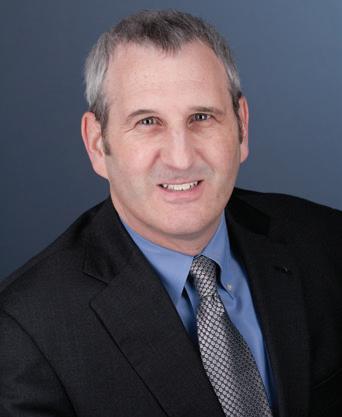RESEARCH NEWS
With New NSF Grant, Firm Aims to Cheaply Produce Hydrogen For Consumers Via ‘Water Splitting’ Breakthrough by Brendan Lynch
A
startup firm with roots in the University of Kansas School of Engineering and Center for Environmentally Beneficial Catalysis will leverage a two-year, $750,000 Small Business Innovation Research (SBIR) grant from the National Science Foundation to advance technology that can broaden the popularity and ease of owning cars with hydrogen fuel cells, while also making hydrogen production friendlier to the environment. Avium LLC, headquartered at KU’s Bioscience & Technology Business Center, is developing a dual element matrix (DEM) water electrolyzer — a ground-breaking device to generate hydrogen from water using electricity at a much lower materials cost. The invention has potential to transform markets for hydrogen in transportation, as well as other markets, including glass manufacturing, power-plant turbine cooling, pharmaceutical
manufacturing and semiconductor processing. Avium LLC was founded in 2017 by a KU doctoral student in chemical engineering, Joe Barforoush, and his faculty mentor Kevin Leonard, associate professor of chemical and petroleum engineering. They hope to be a leading innovator in the fast-growing $100 billion hydrogen generation industry. “Joe and I developed new materials to produce hydrogen and oxygen from water using electricity,” Leonard said. “Right now, in California and some places in Europe and in Japan, you can buy hydrogen-fuel-cell electric vehicles. Instead of being powered by a battery, they’re powered using hydrogen and a fuel cell. They have a lot of advantages, including faster charge times and a longer range. But one of the disadvantages is that the number of fueling stations is insufficient to support the number of hydrogen
Dicklyon, licensed under the Creative Commons Attribution-Share Alike 4.0 International license.
A hydrogen fueling station in Saratoga, California. The station is being supplied by a hydrogen delivery truck, but new technology from Avium LLC could make on-site hydrogen generation possible instead.
cars on the road in California. What we want to do is develop an on-site hydrogen generator for fueling stations for fuel-cell electric vehicles. They can essentially just take water and electricity — which is already available there — and generate hydrogen on demand instead of having a truck in from a chemical plant.” The new NSF Phase II SBIR grant will enable Avium to build a larger prototype of the DEM water electrolyzer and perform field testing at a working hydrogen station. This new grant builds on work Barforoush and Leonard performed under a prior NSF award. “We interviewed over 130 people in the hydrogen industry and people who own hydrogen-fuel-cell cars now in California,” Barforoush said. “People talked about shortages — there was actually a shortage while I was there. I would be at one hydrogen refueling station, and people would say, ‘This is the third station I’ve been to and I’m still not even able to get fuel here.’ There would be huge lines, sometimes with vehicles on the tow-truck beds in line because that’s part of the manufacturer’s deal — free towing if they can’t find fuel.” Today, over 95% of hydrogen is produced from fossil fuels at chemical plants, and the majority of hydrogen at fuel cell vehicle refueling stations is trucked in from these plants — a fact the duo behind Avium hopes to change. “Hydrogen is a commodity chemical,” Barforoush said. “The hydrogen refueling stations are at the bottom of the supply chain because they have relatively low demand right now. Chemical plants meet everyone else’s demand before supplying the
KANSAS ENGINEER | 29





















